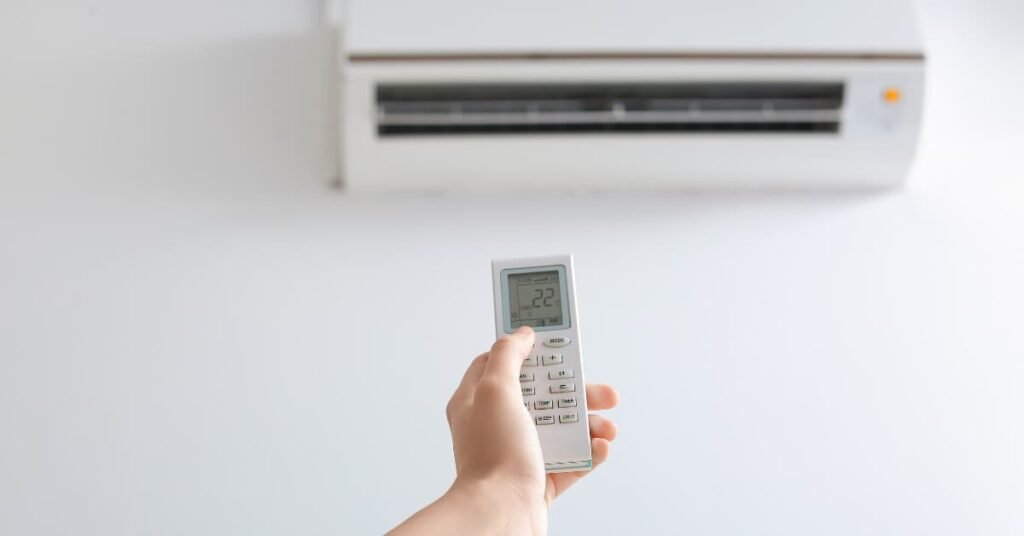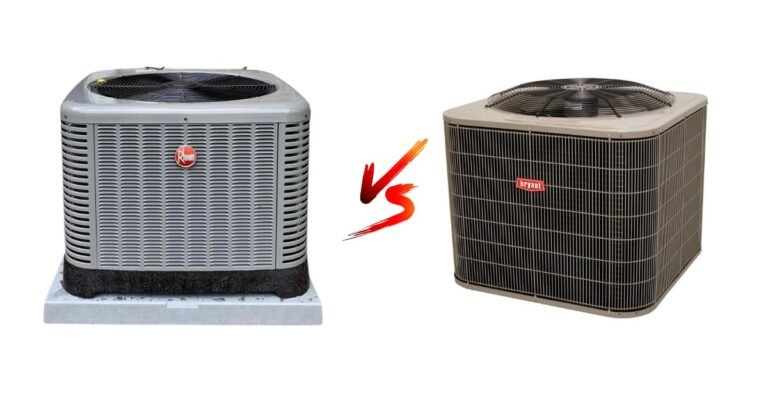What is the Difference Between Dry and Cool Mode in AC?
Managing indoor climates efficiently requires understanding your air conditioner’s settings. Air conditioners, designed to make living spaces comfortable, offer different modes to tackle varying environmental elements.
Cool mode is the standard setting used during hot days to reduce room temperature and maintain comfort. And, dry mode is ideal for times when the room’s temperature is relatively cool, but the humidity level is high – think rainy days or damp spaces.
Are you confused about the difference between dry mode and cool mode in AC? In this article, we’ll explore what is the difference between dry and cool mode in AC.

Dry Mode In AC
When AC’s Dry Mode runs on, it acts almost like a dehumidifier. The fan runs at a slower speed, and the compressor cycles on and off. This controlled approach allows the air conditioner to reduce room humidity while maintaining a stable temperature.
Advantages Of Using Dry Mode
- Saves Energy: With the compressor running intermittently, power usage dips.
- Reduces Humidity: Users feel cooler without further lowering the temperature.
- Silent Operation: Fewer on-and-off cycles result in a quieter environment.
Disadvantages Of Using Dry Mode
- Not for Extreme Heat: Dry Mode is less effective when temperatures soar.
- Occasional Warmth: Inconsistent compressor activity may lead to brief warm spells.
- Limited Cooling: It focuses on moisture, not temperature reduction.
When To Use Dry Mode In AC?
Many people wonder about their AC dry mode. This setting is not the same as cool mode. It helps to remove moisture from the air. Your house feels more comfortable.
Humid Climate
In a humid climate, too much moisture is in the air. This can make rooms feel hotter. Use dry mode to take water out of the air.
Your AC will work less to cool. Your house will feel cooler. You will save more energy.
Monsoon Season
During the monsoon, it rains a lot. The air holds more water. This is when dry mode is perfect. It pulls humidity out, so your rooms dry faster. Things like clothes and furniture also stay dry. You enjoy a more comfortable home.
Preventing Health Issues
Wet air can cause health problems. Mold and mildew can grow. Dust mites also love moisture. Using dry mode helps reduce these.
Your home’s air quality gets better. This can stop allergies and breathing troubles.

Cool Mode In AC
Cool mode is the most used in air conditioners. It keeps your space comfortable during hot days.
In cool mode, the AC unit pulls warm air from the room. It passes the air over refrigerant-filled coils. This process removes the heat from the air. The cooler air is then blown back into the room. As a result, the room’s temperature drops to your set level.
Advantages Of Using Cool Mode
- Quick Cooling: Cools the room quickly to the set temperature.
- Energy Efficient: Modern AC units are designed to use less energy in cool mode.
- Humidity Control: Helps in reducing the moisture level in the air.
Disadvantages Of Using Cool Mode
- Slightly Higher Costs: May lead to higher electricity bills compared to other modes like dry mode.
- Wear and Tear: Continuous use can lead to quicker wear and tear of the AC components.
- Overcooling: If not monitored, it could overcool the room, leading to discomfort.
When To Use Dry Mode In AC?
Many people wonder about their AC dry mode. This setting is not the same as cool mode. It helps to remove moisture from the air. Your house feels more comfortable.
Humid Climate
In a humid climate, too much moisture is in the air. This can make rooms feel hotter. Use dry mode to take water out of the air.
Your AC will work less to cool. Your house will feel cooler. You will save more energy.
Monsoon Season
During the monsoon, it rains a lot. The air holds more water. This is when dry mode is perfect. It pulls humidity out, so your rooms dry faster. Things like clothes and furniture also stay dry. You enjoy a more comfortable home.
Preventing Health Issues
Wet air can cause health problems. Mold and mildew can grow. Dust mites also love moisture. Using dry mode helps reduce these.
Your home’s air quality gets better. This can stop allergies and breathing troubles.

Comparison Between Dry And Cool Modes
Understanding the distinction between Dry and Cool modes can optimize comfort and energy usage depending on the climate and personal preferences.
Difference In Functioning
Dry and Cool modes serve different purposes within an air conditioner’s operations. Let’s break down their primary functions:
- Cool Mode: The default setting, best for reducing room temperature efficiently.
- Dry Mode: Designed to remove humidity without significant cooling, maintaining moderate temperature.
Energy Efficiency
Energy consumption is a key consideration in any mode selection:
- Cool Mode: Consumes more power, as the goal is to cool the space quickly.
- Dry Mode: More energy-efficient for dehumidifying air without overcooling.
Suitability For Different Climates
Both modes have their ideal conditions:
| Mode | Climate Suitability |
| Cool Mode | Best in hot temperatures where lowering the heat is a priority. |
| Dry Mode | Ideal for humid or muggy conditions, where managing moisture is needed. |
Conclusion
Understanding the distinction between dry and cool modes in your AC ensures optimal comfort and efficiency. Selecting the right setting can lead to significant energy savings and prolong the life of your unit. So, next time the heat rises or the air feels too humid, remember these insights and choose the best mode for your sanctuary.
Keep your space perfectly balanced with the knowledge you’ve gained.






